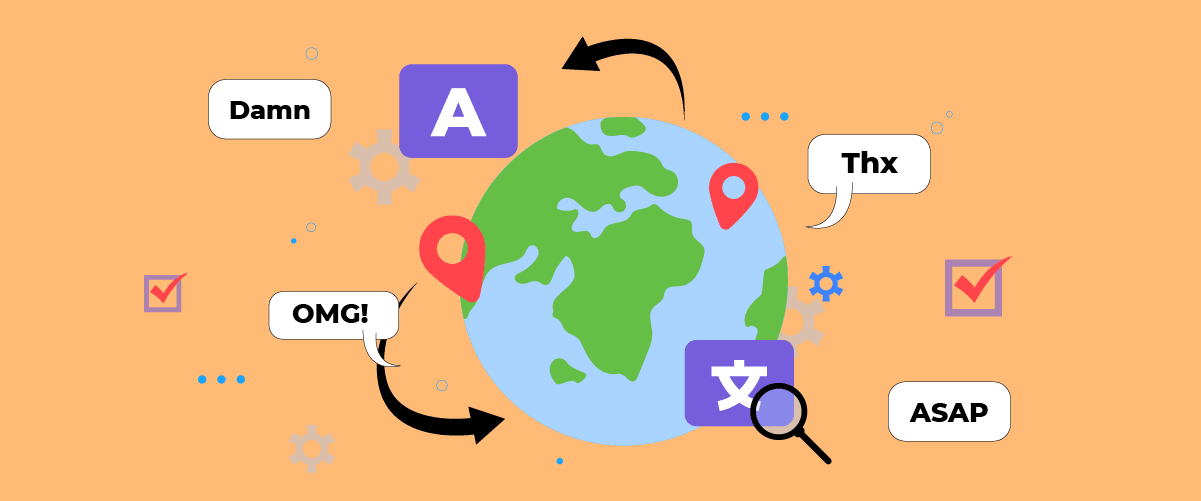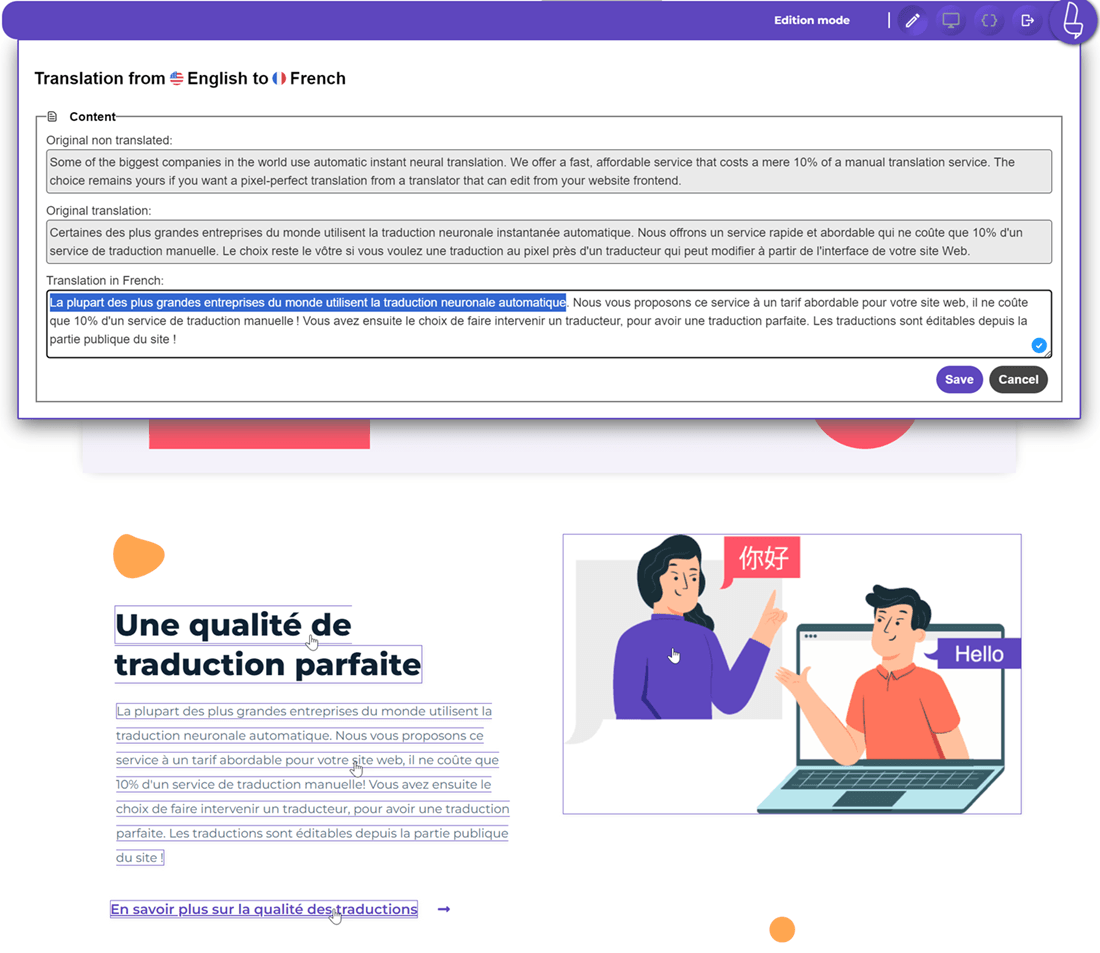Slang is an informal form of language that coexists with formal language and is used for everyday communication across various media and platforms. However, translating slang often poses a challenge for linguists in the localization process.
Why is slang translation such a challenge in localization? The answer lies in the dynamic and contextual nature of slang itself. Slang is not merely a collection of informal words; it reflects culture, identity, and complex social nuances. This article will delve into what slang is, how it differs from formal language, the challenges of localizing slang, and strategies to overcome these obstacles.
What is slang & how is it different from formal language?

Slang is an informal form of language that evolves and thrives in everyday conversations, especially among specific groups such as teenagers or particular communities. The main characteristics of slang are its unique, creative nature and its tendency to change rapidly over time.
More than just vocabulary, slang serves as a marker of identity, social status, and age within a group. For instance, teenagers often use slang to distinguish themselves from adults and to build a sense of camaraderie with their peers. In some cases, slang can function as a secret code understood only by certain group members, enhancing a sense of exclusivity and closeness among them.
In contrast to formal language, slang has distinct characteristics. Formal language is stable, structured, and used in official or professional situations. While slang is dynamic and informal, formal language emphasizes clarity, precision, and adherence to standard grammatical rules. Another significant difference lies in the context of usage and the audience. Formal language is typically used in official documents, academic presentations, or business communication, whereas slang is more suitable for casual conversations and informal social interactions.
Here is a table showing the differences between slang and formal language.
Aspect | Slang | Formal language |
Nature | Dynamic, rapidly changing | Stable, structured |
Context of use | Informal conversations, social interactions | Formal situations, professional settings |
Grammar rules | Flexible, often deviating from standard rules | Adheres to standard grammatical rules |
Audience | Specific groups, peers | General, cross-generational |
Acceptance | Limited to certain groups | Widely accepted in formal contexts |
Longevity | Tends to be short-lived and quickly changes | Long-lasting changes slowly |
Challenges of localization slang

Below are challenges that are often encountered when translating and localizing slang.
- Cultural specificity: The British slang “chuffed” (meaning extremely pleased) is deeply rooted in UK culture. It’s challenging to find an exact equivalent in American English that captures the same level of casual enthusiasm without sounding forced or unnatural.
- Temporal nature: The term “on fleek” (meaning perfectly groomed or styled) was viral in the mid-2010s but has since fallen out of favor. A translator working on a text from that era would need to consider whether to use a more current term or maintain the period-specific language.
- Creativity and wordplay: The slang term “hangry” (a combination of hungry and angry) is a creative play on words that are difficult to translate directly. It captures a specific feeling that might require a longer explanation in other languages.
- Non-standard usage: The phrase “it hits different” (meaning something feels more impactful or meaningful) doesn’t follow standard grammar rules. Translating this while maintaining its casual, emphatic tone can be challenging.
- Beyond dictionaries: The term “stan” (an overzealous or obsessive fan) originated from an Eminem song and gained popularity online. It wouldn’t be found in traditional dictionaries, requiring translators to research current internet culture.
- Context of use: The word “sick” in slang can mean “excellent” or “very good,” but only in specific casual contexts. In other contexts, it retains its standard meaning of “ill.” This dual meaning can be tricky to convey in other languages.
- Generational differences: The phrase “no cap” (meaning “no lie” or “for real”) is primarily used by younger generations. Older translators might need clarification on this or help finding an age-appropriate equivalent in the target language.
- Local sensitivity: The term “fag” is used casually in British English to mean cigarette but is highly offensive in American English. A translator needs to be aware of these regional differences to avoid unintended offense.
How to overcome the challenges of slang localization?
After learning about some of the challenges often faced in the slang translation process, here are some ways you can overcome them.
Research and stay updated

To overcome the challenges of slang translation, translators must consistently research and stay updated on current language trends. This involves immersing oneself in the target culture’s media, including social networks, popular TV shows, movies, and music. Regular interaction with native speakers, especially those from the target demographic, is crucial.
For example, a translator working on localizing content for a teen audience might follow popular TikTok creators or YouTube channels in the target language. This approach helps in understanding not just the words but also the context and nuances of how slang is used in real-life situations. It’s important to note that slang can vary greatly even within the same language based on region, age group, and social circle.
Collaborate with native speakers

Working closely with native speakers, especially those from the target demographic, is invaluable in slang translation. These collaborators can provide insights into the current usage, connotations, and acceptability of various slang terms. They can also help in brainstorming creative alternatives when direct translations are not possible.
For instance, when translating the English slang “spill the tea” (meaning to share gossip) into French, a native speaker might suggest “balance tout” or “crache le morceau” as more natural-sounding equivalents that capture the same informal tone and meaning. This collaboration ensures that the localized content feels authentic and resonates with the target audience.
Adapt rather than translate literally

When dealing with slang, it’s often more practical to adapt the concept rather than attempt a literal translation. This approach focuses on conveying the meaning and tone of the original slang rather than the exact words. It requires creativity and a deep understanding of both the source and target cultures.
A good example is the translation of the English slang “cool” into German. Instead of using a literal translation, which might lose the casual connotation, German translators might use “toll” or “geil” depending on the context. Similarly, the French might use “génial” or “super” to capture the essence of “cool” in different situations. The key is to find a term that conveys the same level of informality and positive connotation in the target language.
Consider the context and target audience

Understanding the context in which the slang is used and the characteristics of the target audience is crucial for effective localization. The same slang term might need to be translated differently depending on factors such as the age of the audience, the formality of the situation, or the medium of communication.
For example, when localizing a casual conversation between teenagers in a video game, the translator might use current youth slang. However, when translating the same conversation for subtitles that a broader audience will read, they might opt for slightly more neutral language that still captures the informal tone without potentially confusing older viewers. This approach ensures that the localized content is appropriate and effective for its intended audience.
Use explanatory techniques when necessary

Explanatory techniques may be necessary in cases where there’s no suitable equivalent for a slang term or where the cultural context is crucial to understanding. These could involve adding a brief explanation, using footnotes, or finding creative ways to incorporate the meaning into the surrounding text.
For instance, when translating the Australian slang “arvo” (meaning afternoon) into Spanish, a translator might initially use the term followed by a brief explanation: “Nos vemos esta arvo… perdón, esta tarde” (See you this arvo… I mean, this afternoon). This approach introduces the slang term while ensuring the meaning is clear. In written content, footnotes or glossaries can be used to explain culturally specific slang without interrupting the flow of the main text.
Employ various translation techniques

When localizing slang, translators use various techniques to effectively convey meaning and tone. Stylistic compensation replaces slang with natural-sounding phrases in the target language, like changing “That party was lit” to “Estuvo genial” (It was awesome) in Spanish. Borrowing can work for widely recognized terms, such as using “cool” in many languages, but caution is needed as connotations may differ across cultures.
For culturally specific slang or memes, explanatory notes might be necessary. Softening helps with potentially offensive slang, maintaining meaning while reducing intensity. For example, “This movie is total crap!” could become “This movie was disappointing.” In extreme cases, omission might be used for highly specific or offensive terms, but only if it doesn’t significantly alter the overall message or tone.
Using automatic translation and live editor features

To overcome the challenges of slang translation, leveraging automatic translation tools combined with live editor features can be highly effective. This approach allows for an initial machine translation of the content, which can then be refined and contextualized in real time.
For instance, services like Linguise offer a front-end live editor that enables translators to edit machine translation results directly on the website’s front page. This immediate visualization of changes helps ensure that slang translations align with the overall language style and context of the content.
And also one of Linguise’s powerful advantages is its integration with numerous CMS, including popular platforms like WordPress, Shopify, etc. This seamless integration allows translators and content managers to work efficiently within their familiar CMS environment while leveraging Linguise’s advanced translation and editing features.
The benefits of using a live editor for slang translation are numerous.
- Provides clear context by allowing editors to see on-site slang usage, facilitating more accurate and natural-sounding translations.
- Real-time editing capability allows for immediate assessment of how well the translated slang fits within the target language.
- Enabling teams to work together efficiently, inviting professional translators, or native speakers, to provide input directly on the translations.
The combination of automatic translation service and human editing through a live editor can significantly improve the quality and efficiency of slang translation and localization, ensuring that the final content resonates authentically with the target audience.
Conclusion

Slang translation presents unique challenges in translation and cross-cultural communication. The dynamic nature of slang, its cultural specificity, and its rapid evolution make it a complex task for translators to accurately convey the meaning, tone, and cultural nuances of slang terms across different languages and cultures.
The combination of automatic translation and human editing through live editor features, such as those offered by Linguise, provides a powerful solution. This approach allows for efficient initial translations that can be quickly adjusted and contextualized in real-time. Register your Linguise account and enjoy a free 30-day trial period for all Linguise features!





